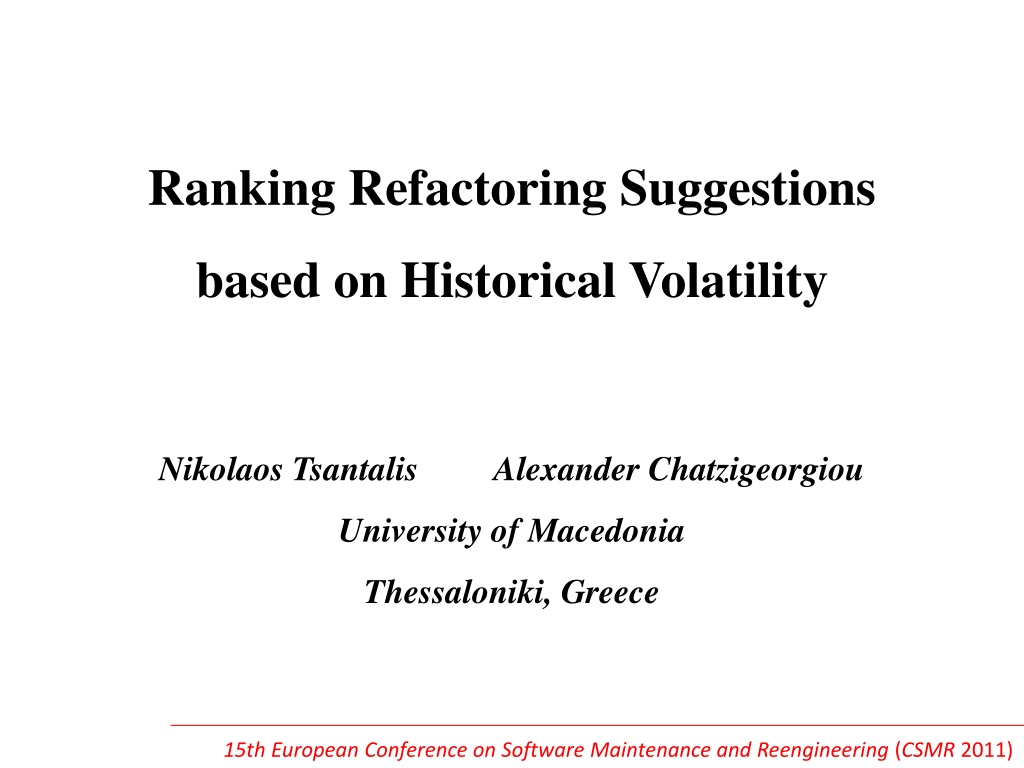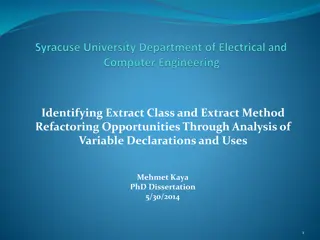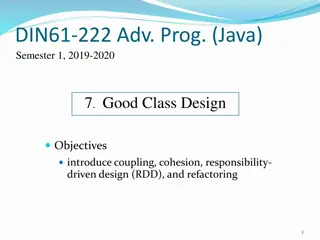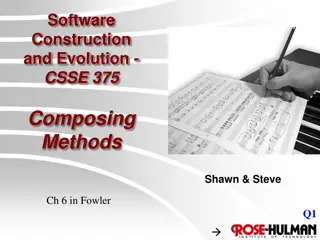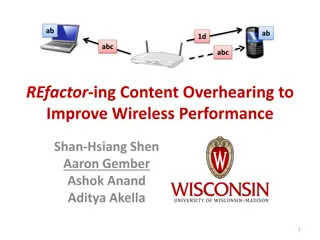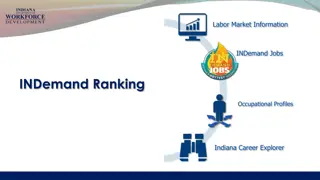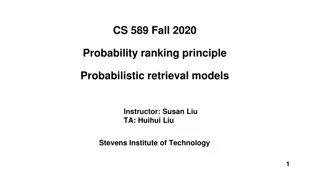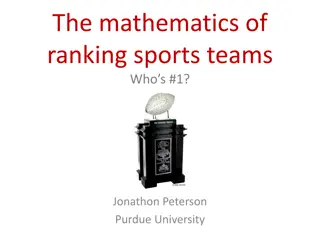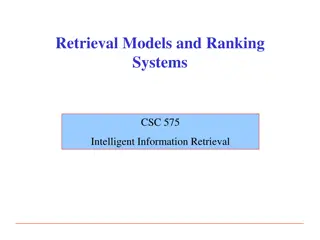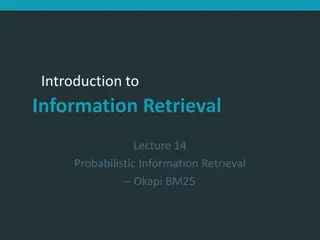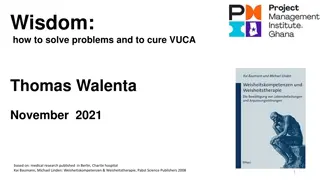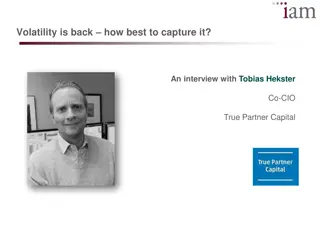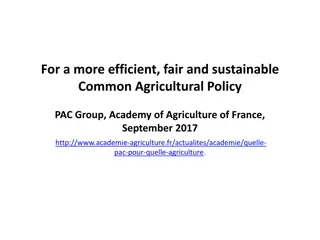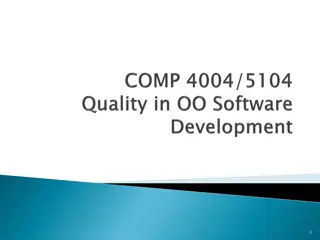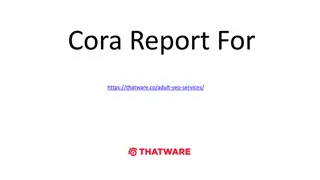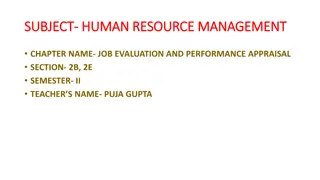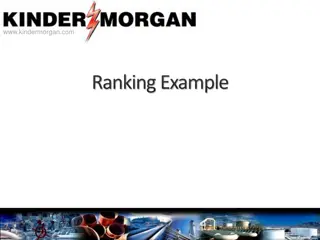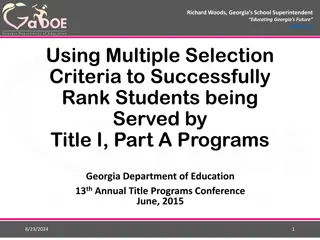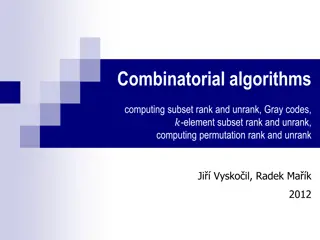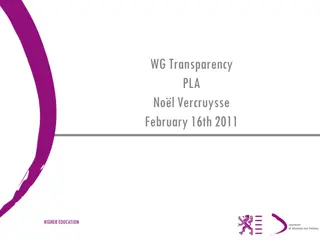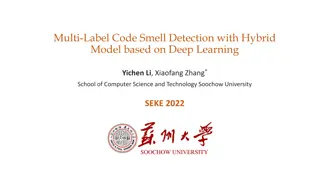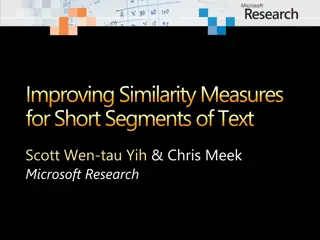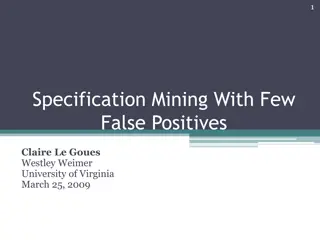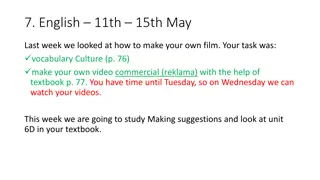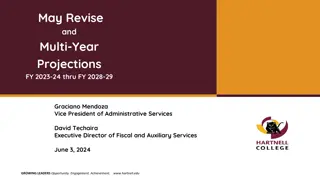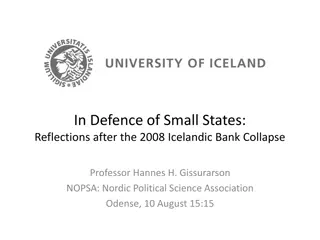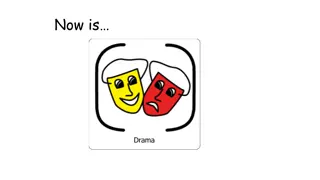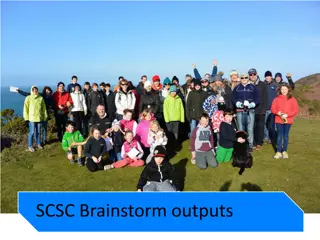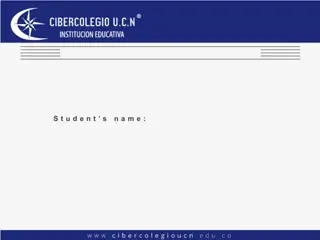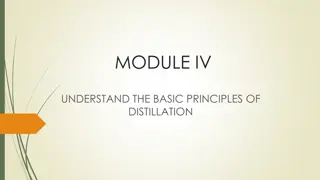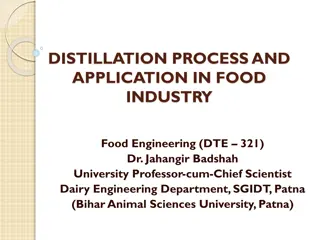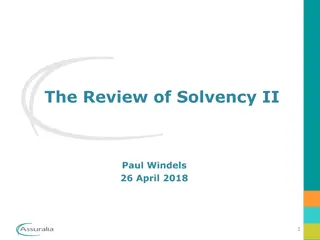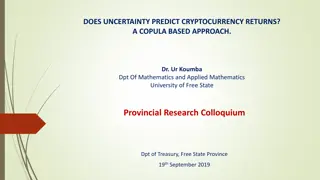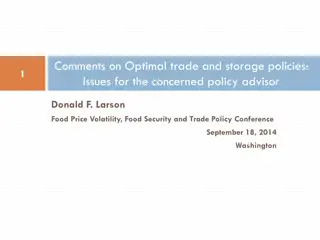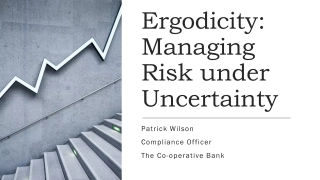Ranking Refactoring Suggestions Based on Historical Volatility
Design problems in software development can be identified based on non-compliance with design principles, excessive metric values, violations of design heuristics, and lack of design patterns. By assessing the urgency to resolve these problems using past code versions, a ranking mechanism can prioritize refactoring suggestions for improved code maintenance. Drawing inspiration from financial markets, where volatility impacts risk and stability, software preventive maintenance can mitigate risks associated with design issues.
Download Presentation

Please find below an Image/Link to download the presentation.
The content on the website is provided AS IS for your information and personal use only. It may not be sold, licensed, or shared on other websites without obtaining consent from the author. Download presentation by click this link. If you encounter any issues during the download, it is possible that the publisher has removed the file from their server.
E N D
Presentation Transcript
Ranking Refactoring Suggestions based on Historical Volatility Nikolaos Tsantalis Alexander Chatzigeorgiou University of Macedonia Thessaloniki, Greece 15th European Conference on Software Maintenance and Reengineering (CSMR 2011)
Design Problems non-compliance with design principles excessive metric values violations of design heuristics lack of design patterns Fowler s bad smells
Design Problems can be numerous JFlex 90 80 70 Number of Smells 60 50 Long Method 40 30 Feature Envy 20 State Checking 10 0 1.3 1.3.1 1.3.2 1.3.3 1.3.4 1.3.5 1.4 1.4.1 1.4.2 1.4.3 Versions JFreeChart 400 350 Number of Smells 300 250 200 Long Method 150 100 Feature Envy 50 State Checking 0 Versions
Motivation Are all identified design problems worrying? Example: Why would it be urgent to improve a method suffering from Long Method if the method had never been changed? Need to define (quantify) the urgency to resolve a problem One possible source of information: Past code versions Underlying Philosophy: code fragments that have been subject to maintenance tasks in the past, are more likely to undergo changes refactorings involving the corresponding code should have a higher priority.
Goal To rank refactoring suggestions based on the urgency to resolve the corresponding design problems The ranking mechanism should take into account: the number of past changes the extent of change the proximity to the current version
Forecasting in Financial Markets vs. Software Financial Markets Trends in volatility are more predictable than trends in prices Volatility is related to risk and general stability of markets defined as the relative rate at which prices move up and down time: trading days Software Preventive Maintenance Risk lies in the decision to invest on resolving design problems volatility based on changes involving code affected by a smell time: successive software versions
Code Smell Volatility volatilityi+1 extent of changei-1,i extent of changei,i+1 transitioni transitioni+1 i-1 i i+1 software versions
Forecasting Models Random Walk (RW) = +1 t t Historical Average (HA) += t 1 t 1 = i i t 1 Exponential Smoothing (ES) = ) + a 1 ( + 1 t t t Exponentially-Weighted Moving Average + = t 1 ) 1 ( t 1 = i + a + 1 t t j t 1
Examined Smells Detection tool: JDeodorant Identified smells: Long Method Feature Envy State Checking
Long Method Pieces of code with large size, high complexity and low cohesion int i; int i; int sum = 0; int product = 1; for(i = 0; i < N; ++i) { for(i = 0; i < N; ++i) { sum = sum + i; product = product *i; } } System.out.println(sum); System.out.println(product);
What to look for The presence of Long Method implies that it might be difficult to maintain the method perform refactoring if we expect that the intensity of the smell will change Previous versions: detect changes in the implementation of the method that affect the intensity of the smell change
Long Method Version i Version i+1 int i; int sum = 0; int product = 1; int sumEven = 0; for(i = 0; i < N; ++i) { sum = sum + i; product = product *i; if(i%2 == 0) sumEven += i; } System.out.println(sum); System.out.println(product); System.out.println(sumEven); int i; int sum = 0; int product = 1; for(i = 0; i < N; ++i) { sum = sum + i; product = product *i; } System.out.println(sum); System.out.println(product); Extend of Change: number of edit operations to convert methodito methodi+1
Feature Envy A method is more interested in a class other than the one it actually is in Target Source m1() m2() m3() m() { m(Target t) { t.m1(); t.m2(); t.m3(); } m1(); m2(); m3(); }
Feature Envy The Intensity of the smell is related to the number of envied members Version i Version i+1 Source Source m(Target t) { t.m1(); t.m2(); t.m3(); } m(Target t) { t.m1(); t.m2(); t.m3(); t.m4(); } envies 3 members envies 4 members Extend of Change: variation in the number of envied members
State Checking State Checking manifests itself as conditional statements that select an execution path based on the state of an object Context Context Type type - type : int - STATE_A : int = 1 - STATE_B : int = 2 - STATE_B : int = 2 - type : int - STATE_A : int = 1 +method() + method() { switch(type) { case STATE_A: } + method() { type.method(); doStateA(); break; case STATE_B: doStateB(); StateB StateA +method() { +method() { break; } } } }
What to look for State Checking: implies a missed opportunity for polymorphism State if (state == StateA) { . . . . . . } else if (state == StateB) { . . . . . . } else if (state == StateC) { . . . . . . } StateC . . . . . . . . . StateA StateB . . . . . . . . . (additional statements) + +
State Checking The intensity of the smell is primarily related to the number of conditional structures checking on the same states Version i Version i+1 ClassZ ClassX ClassY - type : int - STATE_A : int = 1 - STATE_B : int = 2 - type : int - STATE_B : int = 2 - STATE_C : int = 3 - type : int - STATE_A : int = 1 - STATE_B : int = 2 - STATE_C : int = 3 + method() { switch(type) { case STATE_A: doStateA(); break; case STATE_B: doStateB(); break; } } + method() { switch(type) { case STATE_B: doStateB(); break; case STATE_C: doStateC(); break; } } + method() { switch(type) { case STATE_A: doStateA(); break; case STATE_B: doStateB(); break; case STATE_C: doStateC(); break; } } 1 cond. structure 2 cond. structures Extend of Change: variation in the number of conditional structures
Application 1. Calculate past volatility values (for each refactoring opportunity) Estimate future volatility Rank suggestions according to this estimate 2. 3.
Evaluation Goal: To compare the accuracy of the four examined models performed along two axes: direct comparison of forecast accuracy (RMSE) comparison of rankings produced by each model and according to the actual volatility Context: two open source projects JMol: 26 project versions (2004 ..) JFreeChart: 15 project versions (2002 ..)
JMol #classes KSLOC 600 200 180 500 160 140 400 #classes 120 KSLOC 300 100 80 200 60 40 100 20 0 0 State Checking Feature Envy 0.14 0.0045 0.004 0.12 Extent of Change (State Checking) Extent of Change (Feature Envy) 0.0035 0.1 0.003 0.08 0.0025 0.002 0.06 0.0015 0.04 0.001 0.02 0.0005 0 0 1 2 3 4 5 6 7 8 9 10 11 12 13 14 15 16 17 18 19 20 21 22 23 24 25 Transitions between software versions
JFreeChart #classes KSLOC 700 200 180 600 160 500 140 #classes 120 KSLOC 400 100 300 80 60 200 40 100 20 0 0 Long Method 0.06 0.05 Extent of Change 0.04 0.03 0.02 0.01 0 1 2 3 4 5 6 7 8 9 10 11 12 13 14 Transitions between software versions
Comparison of Forecast Accuracy Long Method / JFreeChart N 1 ( ) = i 2 = RMSE i i N 1 0.07 0.06 0.05 0.04 both consider the average of all historical values RMSE EWMA ES 0.03 HA RW 0.02 0.01 0 1 2 3 4 5 6 7 8 9 10 11 12 Transitions between software versions
Comparison of Forecast Accuracy Feature Envy / JMol N 1 ( ) = i 2 = RMSE i i N Peaks in RMSE when versions with zero volatility are followed by abrupt change 1 0.005 0.004 0.003 RMSE EWMA ES Random Walk is being favored by successive versions with zero volatility HA 0.002 RW 0.001 0 1 2 3 4 5 6 7 8 9 10 11 12 13 14 15 16 17 18 19 20 21 22 23 Transitions between software versions
Comparison of Forecast Accuracy Overall RMSE for each smell and forecasting model Random Walk Historical Average Exponential Smoothing EWMA Long Method (JFreeChart) Feature Envy (JMol) State Checking (JMol) 0.032646 0.031972 0.032176 0.032608 0.003311 0.003295 0.003309 0.003301 0.052842 0.052967 0.053051 0.053879 HA achieves the lowest error for Long Method and Feature Envy more sophisticated models that take proximity into account do not provide higher accuracy Simplicity and relatively good accuracy of HA appropriate strategy for ranking refactoring suggestions
Ranking Comparison Forecasting models extract the anticipated smell volatility for future software evolution Therefore, estimated volatility for the last transition can be employed as ranking criterion for refactoring suggestions Evaluation: Compare Rankings produced by each model Rankings produced by actual volatility in the last transition
Ranking Comparison To compare the similarity between alternative rankings (of the same set) we used Spearman s footrule distance S ( ) S = , ( ) ( ) Fr i i 1 2 1 2 = 1 i A B C D E F A B C D E F A B C D E F F E D C B A A B C D E F A C B E F D NFr = 0 NFr = 1 NFr = 0.333
Ranking Comparison - Spearmans footrule high frequency of changes (Long Method / JFreeChart) Random Walk Average 0.6220 0.3255 Historical Exponential Smoothing 0.5334 EWMA Actual 0.3238 low frequency of changes (Feature Envy / JMol) Random Walk 0.0096 Historical Average 0.0210 Exponential Smoothing 0.0199 EWMA Actual 0.0213 (State Checking / JMol) low frequency of changes Random Walk 0.07 Historical Average 0.13 Exponential Smoothing 0.14 EWMA Actual 0.13
Conclusions Refactoring suggestions can be ranked: according to design criteria according to past source code changes (higher priority for pieces of code that have been the subject of maintenance) Simple forecasting models, such as Historical Average lowest RMSE error similar rankings to those obtained by actual volatility (frequent changes) Future Work #1: Analyze history at a more fine-grained level Future Work #2: Combination of structural and historical criteria
Thank you for your attention 15th European Conference on Software Maintenance and Reengineering (CSMR 2011)
